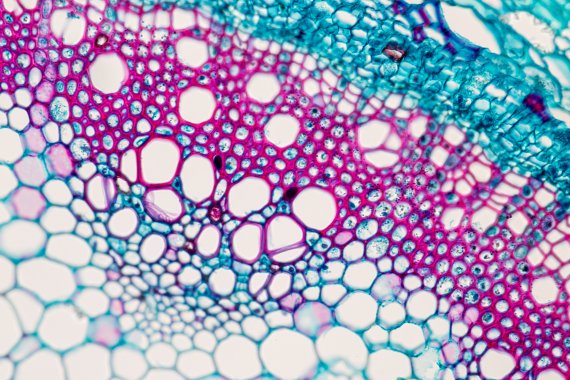Plants started to grow skywards 320 million years ago when they began to make vascular tissue cells. PhD student Nicole van ’t Wout Hofland discovered two key building blocks that made that possible. She was awarded a PhD on 8 October for her research supervised by Dolf Weijers, professor of Biochemistry.
The evolution of plants started with algae. Then came mosses and a bit later, plants with vascular tissue, which forms tiny ducts that transport water and nutrients and give the plant its firmness. So the development of vascular cells enabled plants to grow upwards.
Plant scientists want to know how vascular cells came about in the course of evolution. They have already discovered the proteins TMO5 and LHW, which between them activate a gene that stimulates the manufacture of a growth hormone called cytokinin in the plant. This cytokinin sees to the division of the vascular cells. The more TMO5 and LHW a plant has, the thicker its vascular bundles will grow.
Van ’t Wout Hofland wanted to find out whether the two proteins were the decisive factor in the evolution of vascular plants. So she studied algae to see whether they also contain TMO5 and LHW. To her surprise, they do. In algae, however, the proteins cannot do their job because they are not linked. In mosses, the proteins were found to be linked, but not yet capable of activating the gene that regulates the production of the growth hormone.
When Van ’t Wout Hofland replaced the protein LHW in the model plant Arabidopsis with LHW from moss, the plant stopped making the growth hormone and vascular cells. But when she transferred TMO5 from moss to Arabidopsis, the plant did make the growth hormone. So the first step towards the formation of vascular cells must have been taken in a precursor of moss that probably no longer exists, thinks Van ’t Wout Hofland. ‘I found one of the mechanisms which cause plants to grow upwards; but we don’t yet know whether this is the decisive mechanism.’

 Vascular tissue cells in plants, Photo: Shutterstock
Vascular tissue cells in plants, Photo: Shutterstock